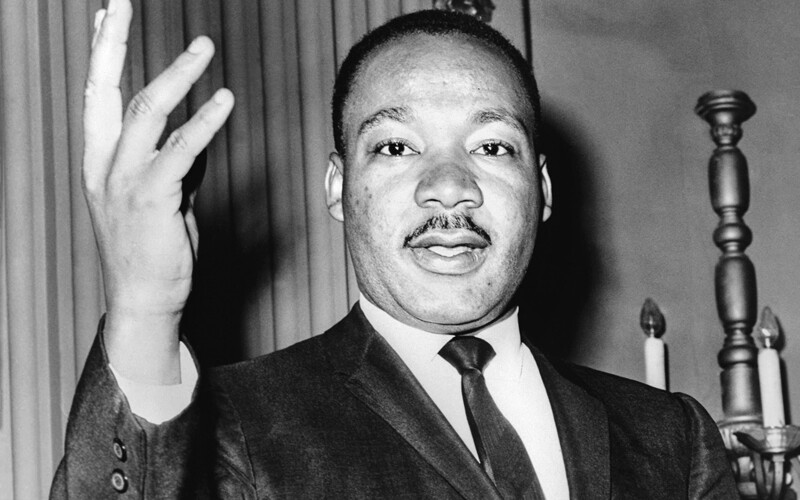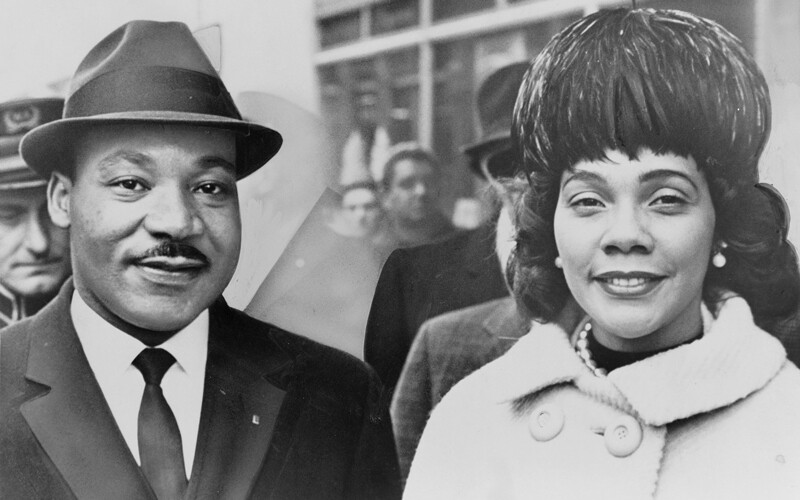Each January, we celebrate the extraordinary life of Martin Luther King Jr. His life and legacy changed not only the United States of America, but the entire world, as he led the fight for equal rights for all individuals regardless of race.
Dr. King is most famously known for his “I Have a Dream Speech” given on the steps of the Lincoln Memorial in Washington, D.C., on August 28, 1963. But what are some lesser known facts about Dr. King that bring a greater understanding to his work and his legacy?
FamilySearch has compiled interesting facts about Dr. King’s life and legacy that you may not know. We hope this list can be a starting point in your celebration of Dr. King on this day.
Are you related to Martin Luther King Jr. or another famous hero?
1. He held a doctorate in theology.

Dr. King earned the title of “Doctor” through a Ph.D. in systematic theology, which he earned at Boston University in 1955. Prior to his doctorate degree, Dr. King earned a bachelor’s degree in sociology from Morehouse College at age 19. He was also awarded a bachelor’s degree in divinity in 1951 from Crozer Theological Seminary.
Dr. King followed in the footsteps of his father by becoming a pastor. After he earned his Ph.D., the King family relocated to Montgomery, Alabama, where Dr. King became the pastor of Dexter Avenue Baptist Church at age 25. Dr. King’s leadership and gift for oration eventually led him to be recruited as the leader and spokesperson for the Montgomery bus boycott at age 26, an event inspired by Rosa Parks, who refused to give up her seat on the bus for a white person.
2. He was jailed 29 times.

Dr. King was thrown into jail nearly 30 times over the course of his lifetime as he advocated for civil rights. He was arrested for acts of civil disobedience as well as for such things as “loitering” and minor traffic violations.
3. A memorial stands in Washington, D.C., to honor him.

The Martin Luther King Jr. memorial opened to the public in 2011. It was the first memorial to honor an African American on the National Mall, and the only major memorial located on the National Mall that isn’t dedicated to a former president.
The main feature of the memorial is a 30-foot high relief sculpture of Dr. King cut out of a mountain. It is symbolic of Dr. King’s remarks during his “I Have a Dream" speech where he stated the dream of hewing “out of the mountain of despair a stone of hope”; Dr. King symbolizes the stone of hope.
4. The cause of Dr. King continues through the efforts of his family.

The work of the civil rights movement extended beyond Dr. King into his own family. Coretta Scott King, Dr. King’s wife, worked alongside King as a leader of civil rights and actively participated in the women’s movement during and after the assassination of her husband. She founded the King Center for Nonviolent Social Change and is the individual credited with making Martin Luther King Jr. Day a reality.
Dr. King and Coretta had 4 children: Martin Luther III, Bernice, Yolanda, and Dexter. Each of them have found their own way to contribute to the quest for civil rights, social justice, and the improvement of society. In 2019 Dr. King's oldest son, Martin Luther King III, attended RootsTech, an annual genealogical conference hosted by FamilySearch, as an honored guest. He spoke during the announcement of a donation to the International African American Museum made by The Church of Jesus Christ of Latter-day Saints.
Are You Related to Martin Luther King Jr.?
Although most of us are not descended from Dr. King, there's a chance you might be a cousin or other distant relation. The global FamilySearch Family Tree is an excellent, free resource that can help you see how you are related to many people. Try these steps to see if you are related to Martin Luther King Jr.:
You will need a free FamilySearch account and a basic family tree.
You might not know how you are related to someone famous, but if you put what you know about your ancestors into the shared Family Tree on FamilySearch, we try and match that information to family lines already documented by others. If you find a connection, we can help you see how you are related to anyone else in the Family Tree, including famous relatives.- Go to the Family Tree page for Martin Luther King Jr. and log in.
To see if you are related to Dr. King, go to his Family Tree profile here and log in if prompted.
Note: If you don't have a FamilySearch account but want to learn more about Martin Luther King Jr.'s life, try visiting his public page on FamilySearch. It has lots of photos, a biography, and even a timeline to explore. - Click the View Relationship Link.
At the top of every Family Tree person page is a View Relationship link that lets you see if you are connected to that person in the Global tree. Try clicking the link on Martin Luther King Jr.'s page, and see what happens! Are you related?
Note: FamilySearch users can also see the ancestors of people in the Global Tree, even when they are not related. If you are curious to see Martin Luther King Jr.'s ancestry, try clicking View Tree, which is right next to the View Relationship link on his page.
5. Martin Luther King Jr. Day is a not a day dedicated to leisure, but to action and service.
The Corporation for National and Community Service states that the holiday, observed on the third Monday in January, is “a day on, not a day off.” It notes that the holiday is the “only federal holiday designated as a national day of service to encourage all Americans to volunteer to improve their communities.” Every year, communities come together and organize service projects to commemorate Dr. King’s life and mission. You and your family can make service a part of your celebration as well.
To find volunteer opportunities in your own community, click the button below:
Related Articles
At FamilySearch, we care about connecting you with your family, and we provide fun discovery experiences and family history services for free. Why? Because we cherish families and believe that connecting generations can improve our lives now and forever. We are a nonprofit organization sponsored by The Church of Jesus Christ of Latter-day Saints. To learn more about our beliefs, click here.





